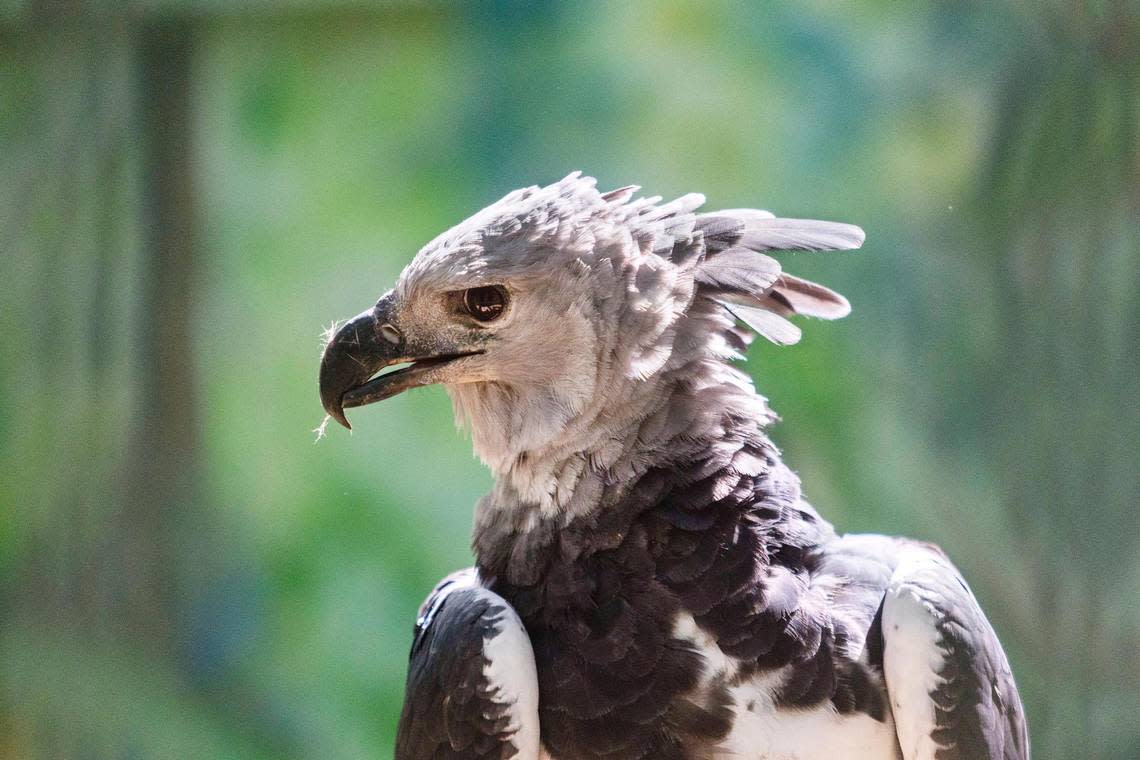Some of the world’s rarest birds are being saved in Boise. Here’s how you can see them
Spreading his wings to their fullest 60-inch extent, Oliver soars just inches above the front row of spectators before landing on the green perch to the crowd’s left. Sitting there for a few seconds, he swallows the piece of meat in his beak before returning to the outstretched glove of his trainer at the front of the room.
Jadn Soper, Oliver’s trainer and a raptor specialist at The Peregrine Fund’s World Center For Birds of Prey, is the one speaking to the group of onlookers on Tuesday afternoon, but Oliver has the room’s attention.
He’s a four-year-old Verreaux’s eagle-owl, and his large gray feathers and sharp beak don’t belie that he’s the largest owl in Africa. But while most Verreaux’s eagle-owls’ main concern in life is survival in Sub-Saharan Africa, Oliver’s job is to act as an ambassador to his species.
He’s one of many birds at the World Center for Birds of Prey in Boise that appear far from home. A harpy eagle, which is native to Central America and has talons the same size as a Grizzly Bear’s claws, calls the center home, as well as several critically endangered California condors.
Smaller birds that live naturally in the Idaho region, such as peregrine falcons and American kestrels, also live at the Center and join Oliver in participating in daily classes.
But they’re not just there as zoo animals. They’re ambassadors for their species and help their human handlers bring attention to bird conservation worldwide.
“It’s really hard to educate people if nobody knows anything about them,” Soper told the crowd as Oliver landed on her arm and cast his wide black eyes over the room.
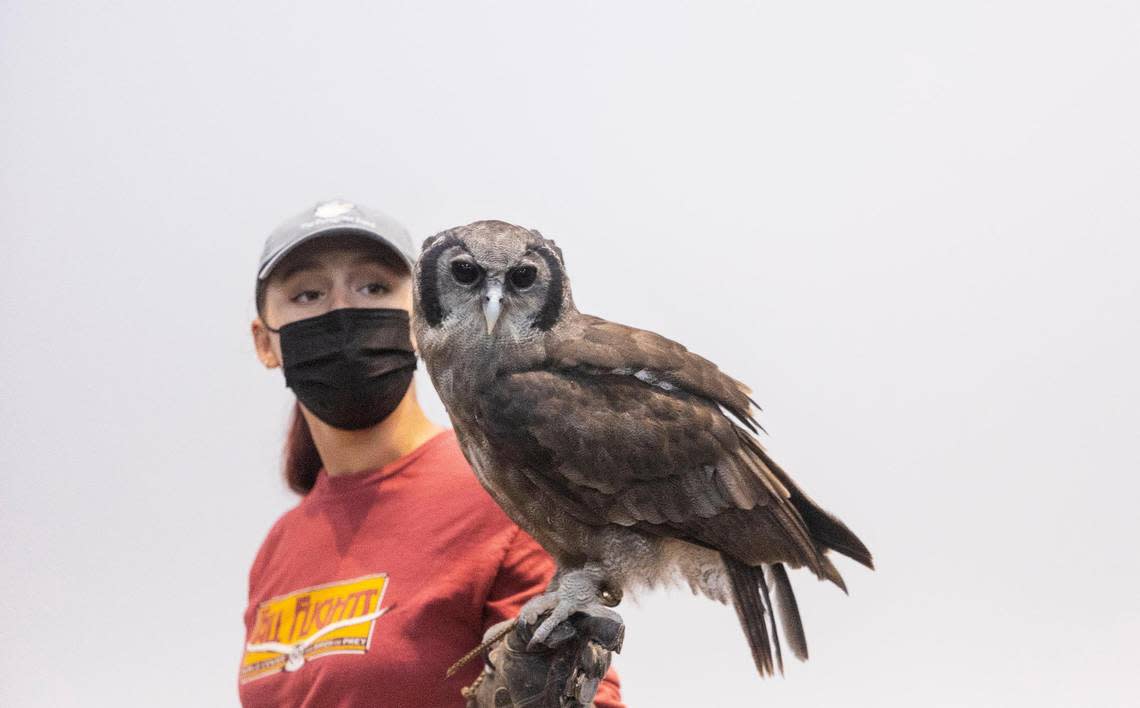
Why are some of the world’s rarest birds in Boise?
The World Center for Birds of Prey, just a 12-mile drive south of downtown Boise, covers about 580 acres, plus a handful of breeding buildings away from the main facility.
But the center’s impact on worldwide conservation efforts — from the recovery of the peregrine falcon from near-extinction in the United States in the late 1900s to working with the Indian government to ban a cattle medicine that was killing three species of vulture — reaches far beyond its 580-acre border.
“Instead of being like a zoo that is meant to connect people with individual birds, our main goal is to connect people with the projects that we’re doing around the world,” said Erin Katzner, former vice president of education at the Center, in an interview. Katzner left her position on Aug. 31, the day after her interview with the Idaho Statesman,
“(We) share those stories and help people understand that conservation is something that can be successful and that we’re doing it all the time,” Katzner continued.
The World Center for Birds of Prey made its home in Idaho in 1984, but the Peregrine Fund’s story started earlier in 1970.
The fund was established at Cornell College in New York in 1970 by biologist and conservationist Tom Cade, who made it his mission to show that a species could be brought back from near extinction. His focus was the peregrine falcon, which had just 39 breeding pairs left in the U.S. and none east of the Mississippi River; the peregrine falcon was removed from the endangered species list in 1999, one of the first animals to come off the list for a positive reason.
A breeding pair of peregrine falcons live in downtown Boise today, nesting in the CenturyLink building on Main and 10th Streets. They can often be seen flying in and out of their nest from The Record Exchange, according to Alicia Leacox, assistant director of the World Center for Birds of Prey.
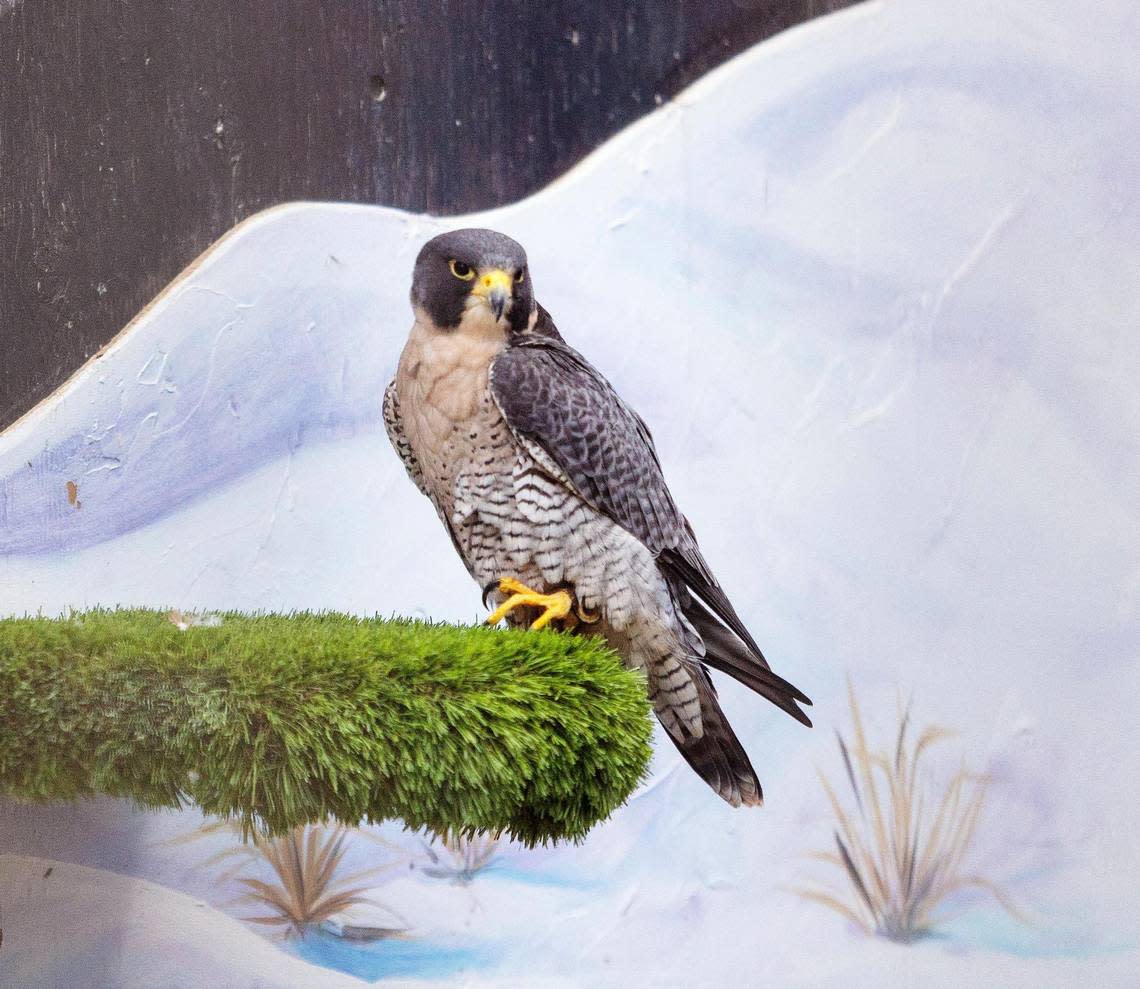
By 1974 Cade’s efforts moved to Fort Collins, Colorado, and a decade later, in 1984, to Boise. Cade was good friends with naturalist Morley Nelson, who worked with the Bureau of Land Management to establish the Morley Nelson Snake River Birds of Prey National Conservation Area.
“Nelson reached out to Tom, he knew Tom well through falconry, and he basically was like, ‘I want you to move to Idaho.’ And Tom was like ‘Why Idaho?’” Katzner said. “Morley worked with the Bureau of Land Management here to get this land donated to us. And that’s what sealed the deal. That’s what brought Tom here.”
The Morley Nelson Snake River Birds of Prey National Conservation Area was established by Congress in 1993 and spans 81 miles of the Snake River Canyon.
The Experience
Once you pass through the small visitors center and gift shop, two enclosures stand immediately to the left. The first houses a great horned owl, and the second is home to Sky, a 20-year-old bald eagle who flew into barbed wire in her youth and can no longer properly fly.
Instead, she now hops around her enclosure and provides perhaps the most up-close-and-personal experience you’ll ever have with the national emblem of the U.S.
“The ability to get as close to a bald eagle as you do here really amazes people,” Katzner said. “I’ve seen people burst into tears, getting to be so close to her.”
Beyond Sky is a pair of California condors, sitting watchfully in their large enclosure that includes a giant manufactured cliff face, complete with hidey-holes and large bare branches for them to sit on. The California condor is the largest wild bird in North America, boasting a wingspan of over 9 feet.
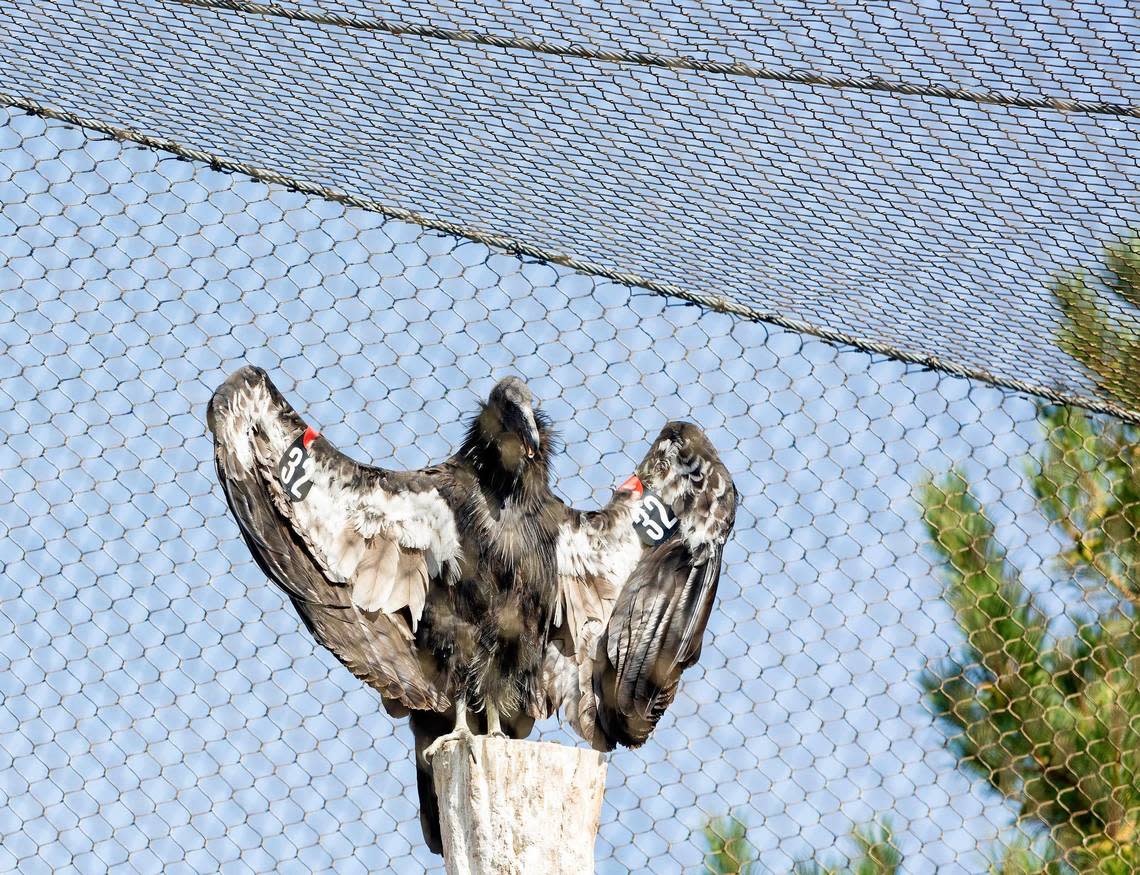
In 1982, just 22 California condors remained in the world, and at one point, every living California condor was in captivity. The population is slowly rebounding with the help of The Peregrine Fund.
There are 49 California condors now living at the World Center for Birds of Prey, about a third of the population worldwide, according to Leacox.
Most of that population lives in breeding buildings that are not open to visitors. There used to be 60 California condors on site, but 11 were recently sent to Arizona to be released into the wild.
“On Saturday, September 24, it’s National Public Lands Day. And we celebrate that by releasing captive-reared condors into the wild for the first time,” Katzner said. “So you can go to Arizona and watch that in person.”
You can also watch a livestream of the release of The Peregrine Fund’s YouTube channel.
Beyond the outdoor exhibits is the interpretive center, which houses five more birds, an education center, and the classroom where Soper and other raptor specialists teach classes with birds four times a day.
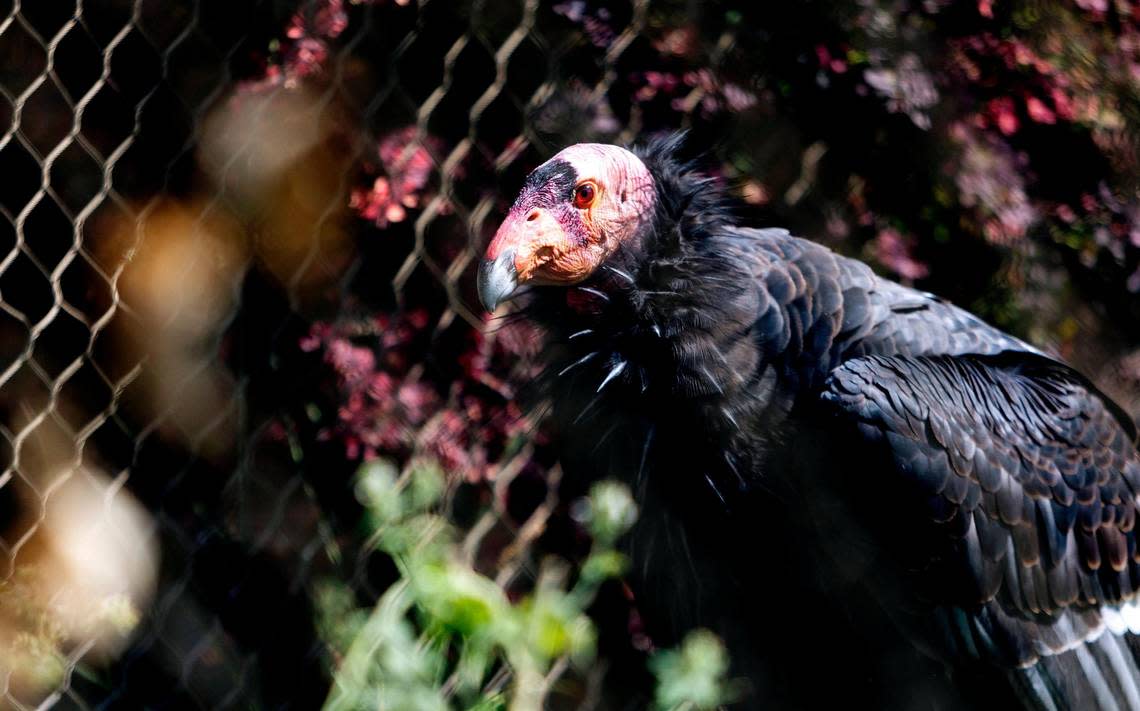
Soaring into the future
Opposite Sky the bald eagle is an empty enclosure with what appears to be small power poles inside of it.
It’s called the Idaho Power Flight Lab — partly because Idaho Power helped support the enclosure construction, but also because the power poles inside will teach people how hawks avoid electrocution sitting on specifically-designed poles.
The specially-designed power lines feature perches for birds to land on safely and are used worldwide.
“It serves as a way for people to learn that when industry and conservation work together, we can solve problems,” Katzner said. “And the technology that was created right here in Idaho to save raptors from electrocution is now used all over the world, which I think is pretty cool.”
A large swath of construction land currently takes away from the area’s tranquility, but it’s the next step in the Center’s evolution to continue its mission of education. The Center is seeing 50,000 visitors a year, Katzner said, and expects that to double within five years.
One of the planned improvements is a new outdoor classroom. The first outdoor fall flight is scheduled for Sept. 23 — tickets can be purchased online — at the Center’s amphitheater. The amphitheater can seat a couple of hundred people, but it provides zero shade and is only used during cooler weather.
The new outdoor classroom is the first area people will walk into after entering a brand-new visitor center and will have a backdrop of a brand-new Peregrine Falcon exhibit. The Center is also planning on building a new indoor exhibit called Eagles of the Americas, which will include new homes for the bald, golden and harpy Eagles.
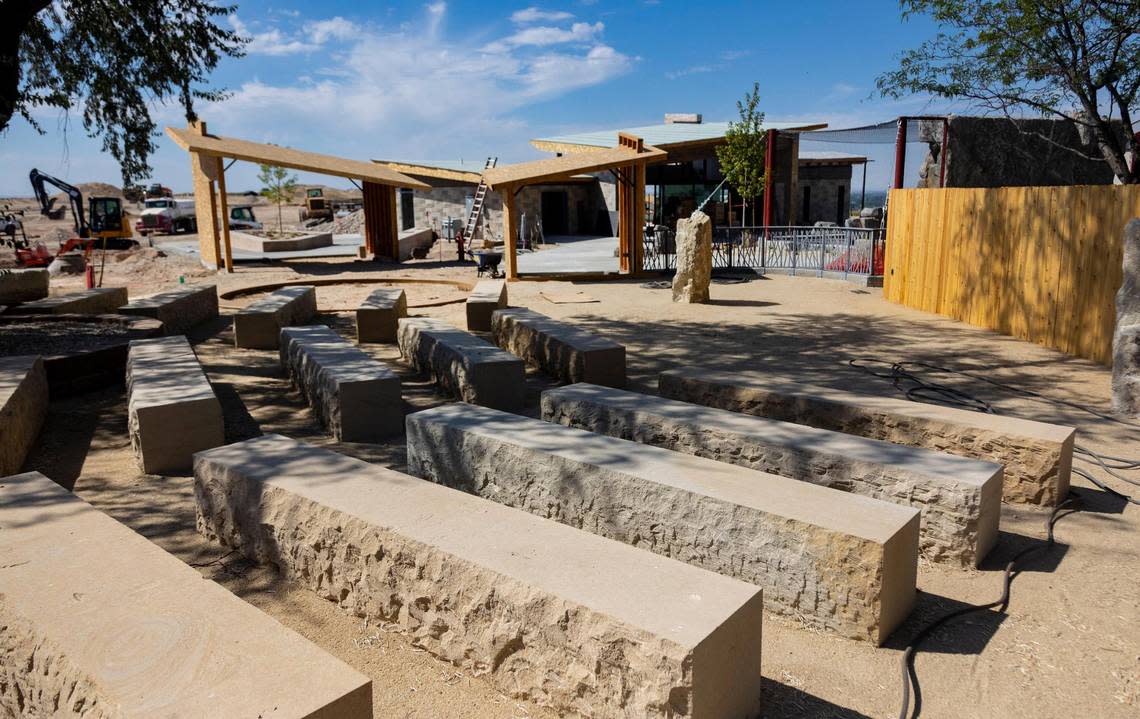
Construction is expected to be complete by April 22, 2023, which coincides with Earth Day.
In the meantime, the Center will continue to do what it’s been doing since Cade first began The Peregrine Fund over 50 years ago:
“We work really hard to engage with people and help people fall in love with raptors,” Katzner said. “One of our goals here is to help everybody in the world fall in love with birds of prey.”
